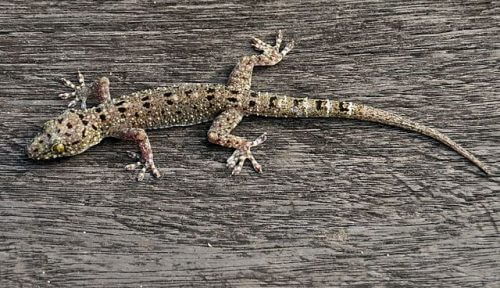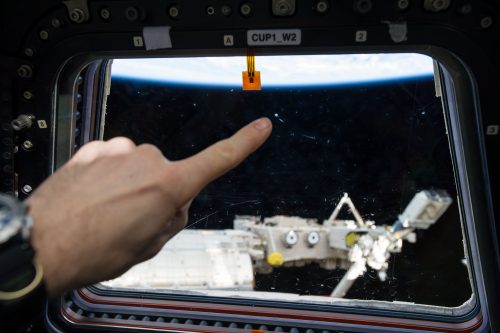A study published in the journal Science Robotics describes a robot developed at Stanford University specifically for cleaning up space debris. The robot can grasp moving objects in sub-gravity conditions. In this study, the researchers developed robotic pincers inspired by the gecko. In experiments at NASA (the US space agency), the researchers showed that the tweezers were able to capture floating objects in microgravity conditions
By Dafna Haim-Langford

When we look up at the sky, it's hard for us to guess that apart from the moon that surrounds us, over five hundred thousand pieces of space debris of various sizes orbit the earth. Scientists from Stanford are developing a tool to collect this waste inspired by the gods.
Space debris consists of decommissioned satellites, remnants of rockets and a lot of man-made garbage that has reached space in the last decades. The movement of debris in space can reach a speed of thousands and tens of thousands of km/h, thus posing a significant risk to all those engaged in space exploration - astronauts, satellites and spaceships. In addition, the collision of pieces of space debris can create an explosion, and this will increase the amount of moving parts in space, a situation that can lead to a catastrophic chain of collisions, known as Kessler Syndrome.

The need to develop a dedicated device for collecting space debris is due to the fact that the tools that exist today are generally not suitable for collecting large parts with a smooth surface. The magnets are not effective in picking up pieces of aluminum or glass (eg, leftover solar cells from satellites), and vacuum suction is not active in the absence of an atmosphere. In addition, various materials such as adhesives are not resistant to the extreme temperatures in space.
In a study published in the journal Science Robotics last June, a robot developed at Stanford University specifically for the purpose of cleaning up space debris is described. The robot can grasp moving objects in sub-gravity conditions. In this study, the researchers developed robotic pincers inspired by the gecko. In experiments at NASA (the US space agency), the researchers showed that the tweezers were able to capture floating objects in microgravity conditions.
The gecko's attachment mechanism, which allows it to walk on smooth surfaces and stick upside down on the ceiling just by touching its fingers, is based on tens of thousands of microscopic hairs that produce attachment to smooth surfaces through weak bonds. Many weak ties create a strong attachment mechanism. The gecko's attachment mechanism has inspired developments in various fields, from gloves for climbing walls to biological adhesives for gluing tissues.
The researchers from Stanford developed the surfaces of the gecko similarly to the gecko's leg, where they based the adhesion ability of the gecko on elements with a thickness of forty micrometers (the hairs of the gecko are approximately two hundred nanometers thick). Movement of these elements in one direction produces linkage, and movement in the other direction causes detachment. The low amount of energy needed to create the movement that leads to attachment is very important for any action in space, as careless movement in space can cause uncontrolled migration of objects in unspecified directions. At this stage, clamps can hold objects weighing up to four hundred kilograms and with a volume of one hundred times the volume of the clamp itself.
Enthusiastic about the results of the experiments so far, the researchers plan to optimize the use of tweezers or connect them to a robot that will one day be able not only to clean space, but also be used to maintain space stations, satellites, telescopes and everything that comes out of the atmosphere in the service of man.

4 תגובות
Very nice. You can show it to the students as an extension in HTB when learning about weight. overpowering. We would be happy for more such innovations related to the material and we will update the students.
Too bad no translation, but still excellent
To Lorem Ipsum. A good idea on the face of it, but it seems to me that the implementation will cause problems
Maybe no less serious than the existing ones. a) We must be sure that the gel is not
will break into sub-pieces. b) Once lots of small parts decelerate, their trajectories
will change in an unplanned manner and may put them in the orbits of satellites
and ferries and endanger them.
In my opinion, for most objects, a simple elastic net will be enough to wrap the object and allow it to be dragged into the atmosphere for burning, the adhesion effect here is quite unnecessary.
I would rather think about raising large pieces of airgel with a large volume, and low density, so that it has a large surface area or volume, which can swallow or slow down small pieces of space debris. Eventually the projectile receiver will descend and enter the atmosphere, where it will burn up safely. Even if the waste only passes through it and is not swallowed, it will slow down to such an extent that it will speed up its entry into the atmosphere.
This is especially good for small fragments that flood the space and will not require the adjustment of a route in respect of each piece, but only statistical work in routes prone to disasters.